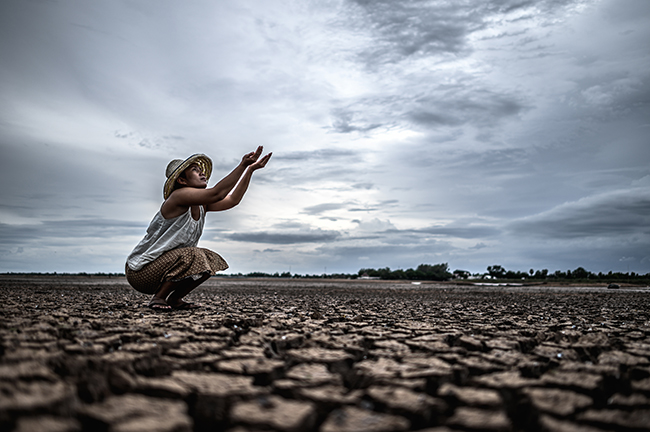Natural disasters such as hurricanes, earthquakes, wildfires, and floods can leave a trail of destruction that goes beyond physical damage. For many survivors, the emotional and psychological impact is just as devastating. Post-Traumatic Stress Disorder (PTSD) often emerges in the aftermath, affecting individuals and entire communities. This article explores how PTSD develops after natural disasters and the ways communities work together to heal and rebuild.

Understanding PTSD After Natural Disasters
PTSD is a mental health condition that occurs after experiencing or witnessing a traumatic event. Natural disasters can trigger PTSD because they create intense fear, helplessness, and loss. According to the World Health Organization (WHO), 5-40% of disaster survivors may experience PTSD, depending on the severity of the event and individual vulnerabilities.
Common Symptoms of PTSD
People with PTSD may exhibit a range of symptoms, including:
- Intrusive Thoughts: Flashbacks, nightmares, or distressing memories of the disaster.
- Avoidance Behaviors: Steering clear of places, people, or activities that remind them of the event.
- Hyperarousal: Being easily startled, having difficulty sleeping, or feeling constantly on edge.
- Negative Mood Changes: Persistent feelings of fear, guilt, or hopelessness.
These symptoms can last for weeks, months, or even years, significantly disrupting daily life.
Why Natural Disasters Trigger PTSD
Unlike other traumatic events, natural disasters affect entire communities, amplifying the emotional toll. Some key factors contributing to PTSD include:
– Suddenness and Unpredictability: Natural disasters often strike with little warning, leaving individuals unprepared and overwhelmed.
– Loss of Loved Ones or Homes: Losing family members, friends, or personal belongings creates immense grief and insecurity.
– Displacement: Being forced to leave one’s home and live in temporary shelters can cause significant stress.
– Community Devastation: Seeing familiar neighborhoods destroyed fosters a sense of helplessness and despair.
The Community-Wide Impact of PTSD
PTSD affects not only individuals but also the social fabric of communities. When many people are coping with trauma, it can strain local resources and relationships. Common community-wide impacts include:
- Economic Struggles: Businesses and livelihoods may be disrupted, creating financial stress.
- Health Care Overload: Increased demand for mental health services can overwhelm local systems.
- Social Isolation: Trauma can lead to withdrawal from social connections, weakening community bonds.
- School Disruptions: Children’s education may suffer as schools are damaged or closed, and students struggle to focus due to trauma.
How Communities Recover from PTSD
Recovery from a natural disaster involves addressing both physical rebuilding and emotional healing. Here are some of the most effective ways communities can support PTSD recovery:
1. Immediate Crisis Support
In the immediate aftermath of a disaster, providing basic needs is crucial:
– Emergency Shelters: Safe spaces help survivors regain a sense of security.
– Food and Water Distribution: Meeting essential needs reduces immediate stress.
– Crisis Counseling: On-site mental health professionals can offer immediate emotional support.
2. Access to Mental Health Services
Professional mental health support is essential for addressing PTSD. Communities can:
– Establish free or low-cost counseling centers.
– Train local health workers to recognize and treat PTSD symptoms.
– Offer group therapy sessions to foster shared healing experiences.
3. Peer Support and Community Groups
Connecting with others who have experienced similar trauma can be incredibly therapeutic. Peer support groups provide a space to:
– Share experiences and feelings.
– Learn coping strategies from others.
– Build a sense of solidarity and resilience.
4. Education and Awareness Campaigns
Raising awareness about PTSD helps reduce stigma and encourages survivors to seek help. Community leaders can:
– Organize workshops to educate residents about trauma and recovery.
– Distribute informational materials on recognizing PTSD symptoms.
– Collaborate with schools to support children who may be struggling.
5. Involvement in Rebuilding Efforts
Engaging survivors in the physical rebuilding process can promote emotional recovery by:
– Restoring a sense of control and purpose.
– Fostering collaboration and community pride.
– Creating visible signs of progress and hope.
6. Long-Term Planning and Support
Recovery doesn’t happen overnight. Communities must focus on sustainable, long-term efforts to support mental health, such as:
– Establishing permanent mental health services.
– Providing ongoing training for first responders and educators.
– Creating disaster preparedness programs to reduce future trauma.
Coping Strategies for Individuals
While community support is vital, individuals can also take steps to manage their PTSD symptoms:
- Seek Professional Help: Therapy and medication can make a significant difference.
- Practice Mindfulness: Techniques like deep breathing and meditation can reduce stress.
- Stay Connected: Maintaining social relationships helps combat isolation.
- Set Small Goals: Taking steps toward normalcy, such as returning to work or hobbies, can rebuild confidence.
- Limit Media Exposure: Constantly viewing disaster-related news can retraumatize survivors.
Examples of Community Resilience
Several communities around the world have demonstrated remarkable resilience after natural disasters. For example:
– New Orleans Post-Hurricane Katrina: Grassroots organizations played a key role in rebuilding homes and providing mental health services.
– Japan After the 2011 Tsunami: Local governments established trauma recovery programs, including art therapy and peer support groups.
– Australia Post-Bushfires: Volunteer-led initiatives provided emotional support and practical assistance to survivors.
Final Thoughts
Natural disasters can leave deep emotional scars, but recovery is possible with the right support. By addressing PTSD at both individual and community levels, survivors can rebuild their lives and foster a renewed sense of hope and resilience. If you or someone you know is struggling with PTSD after a natural disaster, reaching out for help is a vital step toward healing. Together, communities can recover, rebuild, and thrive.
